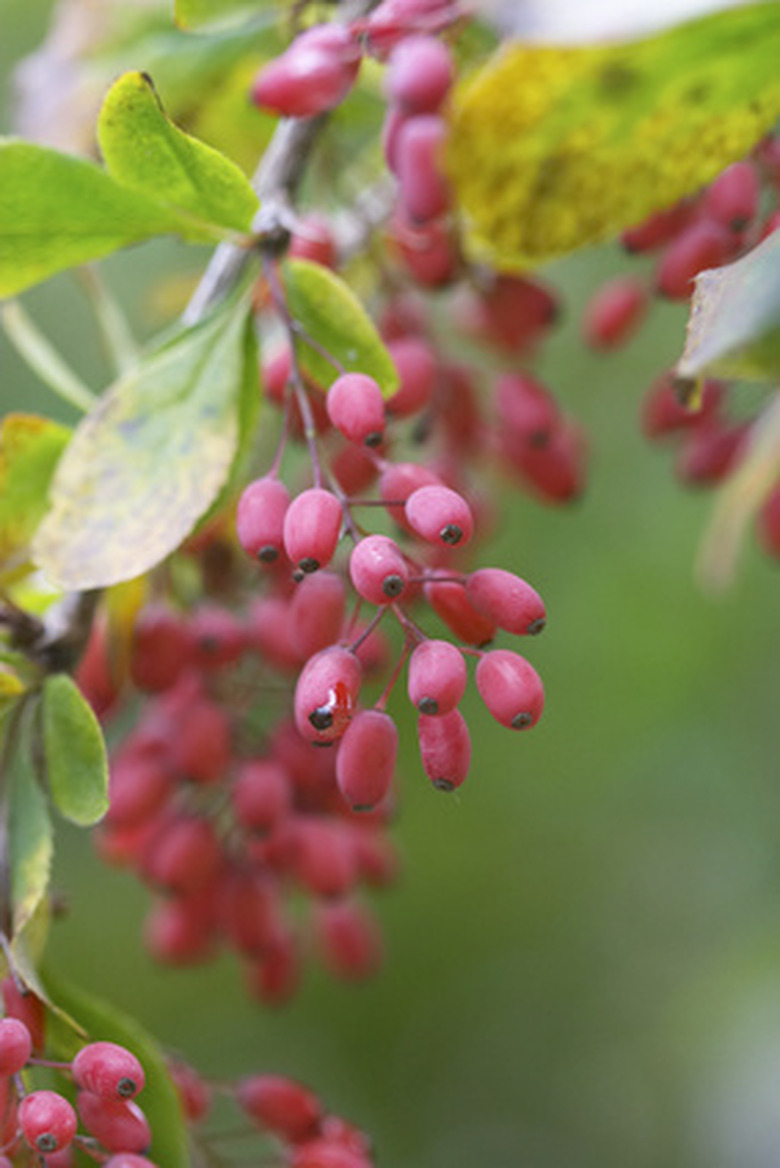How To Prune Berberis Thunbergii
Berberis thunbergii, better known as Japanese barberry, is a deciduous flowering shrub that blooms colorful fragrant flowers in the summer in USDA zones 5 to 8. Because it flowers on its current season's growth, yearly pruning of some of the old wood is essential to keep a Berberis thunbergii tidy and full of blooms. Always wear garden gloves, long-sleeve shirt and pants because a Berberis thunbergii bush has thorns.
Step 1
Prune Berberis thunbergii in the late winter or early spring before new growth begins to grow. However, prune diseased or damaged branches any time of the year. Use a pair of pruning shears or hand garden clippers.
Step 2
Prune to shape or thin and to cut off the oldest and tallest branches. Cut off no more than one-third of a Berberis thunbergii. Choose some stems in the middle of the plant to increase air flow and off the top to reduce height. The bottom of the bush should remain wider than the top.
- Berberis thunbergii, better known as Japanese barberry, is a deciduous flowering shrub that blooms colorful fragrant flowers in the summer in USDA zones 5 to 8.
- Because it flowers on its current season's growth, yearly pruning of some of the old wood is essential to keep a Berberis thunbergii tidy and full of blooms.
Step 3
Cut just above the bud or parent branch. Cut at an angle so the cut is parallel to the parent branch. You do not need to seal the cuts. Clean up the branches and discard.
Berberis Thunbergii Varieties
For small spaces and low borders, compact "Admiration" grows 12 to 20 inches high. Michael Dirr lists "Crimson Pygmy" as the most popular of the purple-leaved forms because of the mounded form, compact growth and reddish-purple leaves. New growth is rich purple, followed by new shoots with rose-pink leaves that are mottled and splotched with deeper red-purple color. Mature leaves are reddish-purple, and leaves turn bright red in fall. It grows 5 to 6 feet tall and wide. " Shrubs reach 8 feet tall but only 1 to 2 feet wide. Marshall's Upright" grows 3 to 4 feet tall and 3 feet wide with dense growth that makes it suitable as a barrier plant or hedge as well as a specimen plant. Burgundy leaves turn scarlet in fall. " Sunsation" or "Monry" has an upright vase shape, with green new growth maturing to brilliant gold. Sparkle" has glossy, green, leathery leaves held on arching horizontal branches.
- Cut just above the bud or parent branch.
- Marshall's Upright" grows 3 to 4 feet tall and 3 feet wide with dense growth that makes it suitable as a barrier plant or hedge as well as a specimen plant.
Things Needed
- Pruning shears or hand clippers
- Garden gloves
- Long-sleeve shirt and pants
References
- Fine Gardening: Berberis Thunbergii F. Atropurpurea
- Clemson University: Pruning Shrubs
- Texas A&M University: Follow Proper Pruning Techniques
- Virginia Cooperative Extension: Japanese Barberry
- Dirr's Encyclopedia of Trees and Shrubs; Michael A. Dirr
- Cultivars of Woody Plants, Volume 1; TCR Press
- North Carolina State University Cooperative Extension Service: Select Bereris Thunbergii Cultivars
